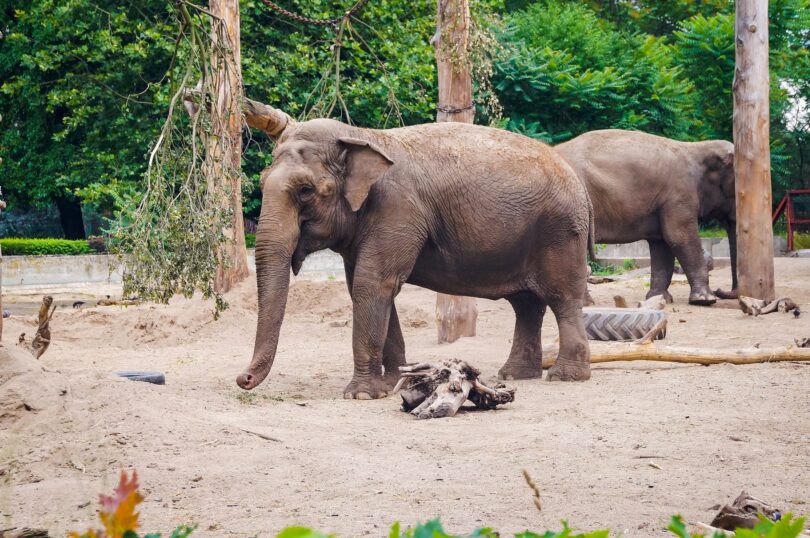introduction:
In the animal kingdom, few creatures command as much awe and admiration as the elephant. These majestic giants, with their immense size, intelligence, and intricate social structures, have fascinated humans for centuries. From their impressive physical characteristics to their crucial role in ecosystems, elephants are truly remarkable beings deserving of our respect and protection.
Physical Marvels
One cannot discuss elephants without marveling at their sheer size. The African elephant, the larger of the two species, can stand up to 13 feet tall at the shoulder and weigh as much as 14,000 pounds. Their Asian counterparts are slightly smaller but still impressive, reaching heights of around 10 feet and weighing up to 11,000 pounds.
Aside from their size, elephants are known for their distinctive features, including their long trunks, large ears, and tusks. The trunk, a fusion of the nose and upper lip, serves a multitude of purposes, from grasping objects and feeding to communication and bathing. Elephants also use their ears to regulate their body temperature, flapping them to cool down in hot climates. Tusks, elongated incisor teeth, are used mainly for digging, lifting objects, and defense.
Social Bonds
Elephants are highly social animals, forming tight-knit family groups led by a matriarch. These groups, known as herds, typically consist of related females and their offspring. Male elephants, called bulls, may roam alone or form bachelor groups until they reach sexual maturity, at which point they may seek out females to mate with.
The bond between members of an elephant herd is powerful, with individuals displaying empathy, cooperation, and even mourning rituals. They communicate through a variety of vocalizations, body language, and infrasound—a low-frequency sound that can travel over long distances and is thought to play a crucial role in long-distance communication among elephants.
Environmental Engineers
Beyond their cultural and ecological significance, elephants play a vital role in shaping their habitats. Often referred to as “ecosystem engineers,” they exert a profound influence on their surroundings, particularly in forested and savannah ecosystems. By feeding on a variety of vegetation and uprooting trees, elephants create open spaces and pathways that benefit a wide range of species, from insects to larger mammals.
Additionally, their dung serves as a source of nutrition for many organisms and helps to disperse seeds, promoting the growth of vegetation and maintaining biodiversity. In this way, elephants act as keystone species, exerting disproportionate effects on their ecosystems relative to their abundance.
Conservation Challenges
Despite their importance, elephants face numerous threats to their survival, primarily due to human activities. Habitat loss, poaching for ivory and other body parts, human-elephant conflict, and captivity are among the most significant challenges confronting elephant populations worldwide.
Efforts to conserve elephants involve a combination of habitat protection, anti-poaching measures, community engagement, and education. Organizations and governments around the world are working tirelessly to safeguard these iconic creatures and ensure their long-term survival.
Looking Ahead
As we continue to learn more about elephants and their complex behaviors, it becomes increasingly clear that they are not just charismatic megafauna but essential components of healthy ecosystems. Protecting elephants and their habitats is not only a matter of moral obligation but also crucial for the well-being of countless other species and the ecosystems upon which we all depend.
In appreciating and safeguarding these magnificent creatures, we not only preserve a symbol of wilderness and wonder but also uphold our responsibility as stewards of the natural world. For as long as elephants roam the Earth, they will serve as a reminder of the beauty and fragility of the planet we call home.
Innovative Research and Conservation Initiatives
In recent years, innovative research has shed new light on the behavior, communication, and intelligence of elephants, further emphasizing the urgency of their conservation. Scientists have employed advanced technologies such as GPS tracking, camera traps, and acoustic monitoring to study elephant movements, social dynamics, and interactions with their environment.
One fascinating area of research involves the study of elephant cognition and emotion. Studies have revealed that elephants possess remarkable cognitive abilities, including problem-solving skills, self-awareness, and even a capacity for empathy. Observations of elephants displaying behaviors such as consoling distressed individuals and demonstrating concern for injured or deceased herd members have provided compelling evidence of their emotional intelligence.
Conservation initiatives aimed at protecting elephants encompass a wide range of strategies, from establishing protected areas and wildlife corridors to implementing community-based conservation programs that involve local communities in conservation efforts. In many regions, initiatives focused on mitigating human-elephant conflict are crucial for fostering coexistence between people and elephants.
Tourism and Responsible Wildlife Viewing
Tourism can play a significant role in elephant conservation when managed responsibly. Eco-tourism initiatives that prioritize ethical and sustainable practices can generate revenue to support conservation efforts while providing opportunities for people to appreciate elephants in their natural habitat.
Responsible wildlife viewing practices, such as maintaining a safe distance from elephants, avoiding disruptive behavior, and supporting reputable tour operators committed to conservation, are essential for minimizing stress and disturbance to wild elephant populations. By promoting awareness and appreciation of elephants among tourists, these initiatives can foster a greater sense of stewardship for these magnificent creatures and their habitats.
Global Collaboration and Advocacy
Addressing the complex challenges facing elephants requires collaboration and cooperation on a global scale. International agreements, such as the Convention on International Trade in Endangered Species of Wild Fauna and Flora (CITES), play a crucial role in regulating the trade in elephant ivory and other wildlife products.
Advocacy efforts aimed at raising awareness about the plight of elephants and advocating for stronger conservation measures are also vital. Campaigns to combat the illegal wildlife trade, reduce demand for ivory and other elephant products, and promote sustainable alternatives are essential components of broader conservation strategies.
Through collective action and commitment, we can work together to ensure a future where elephants continue to roam the Earth, enriching our lives and ecosystems with their presence. We uphold our responsibility to safeguard the natural world for future generations by valuing and protecting these magnificent creatures.





